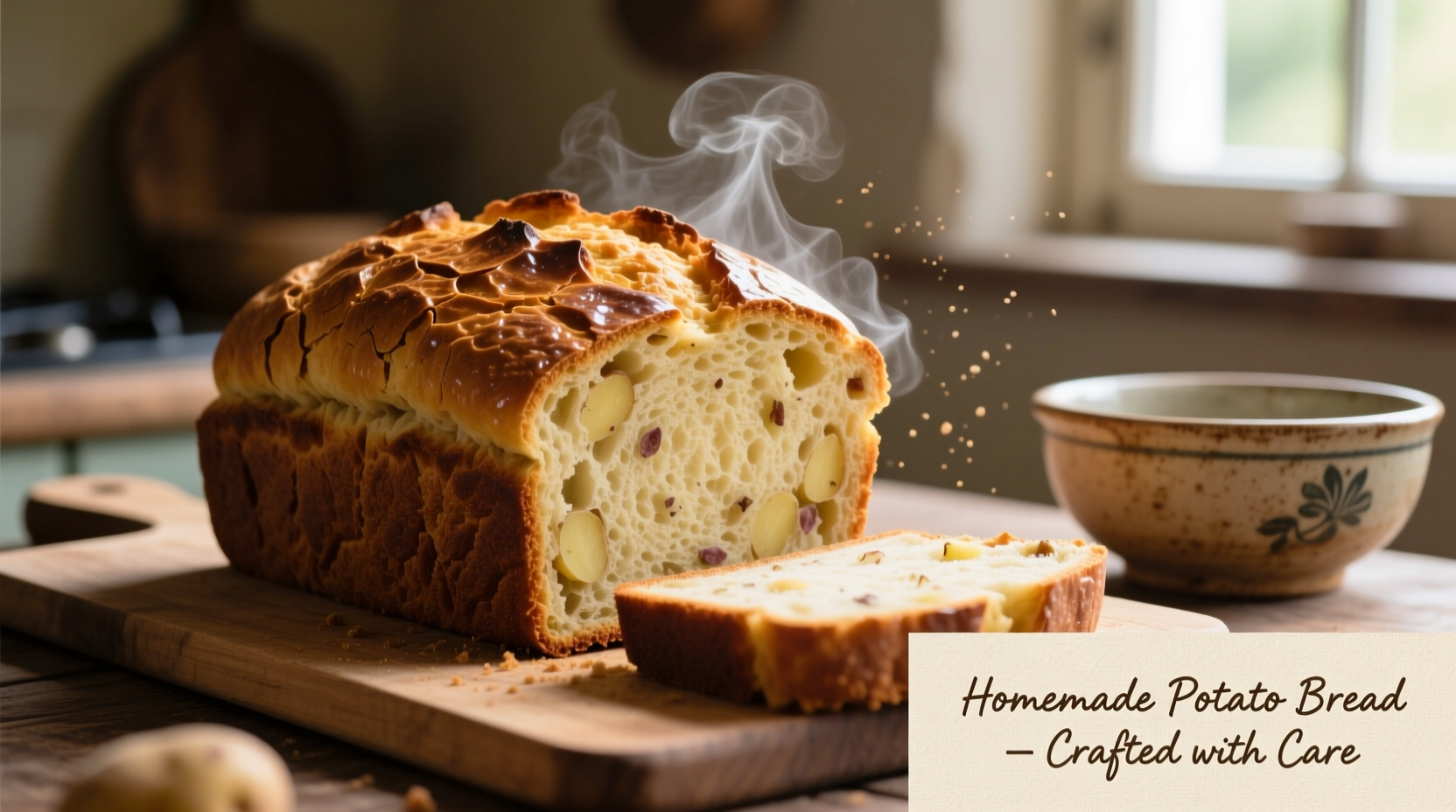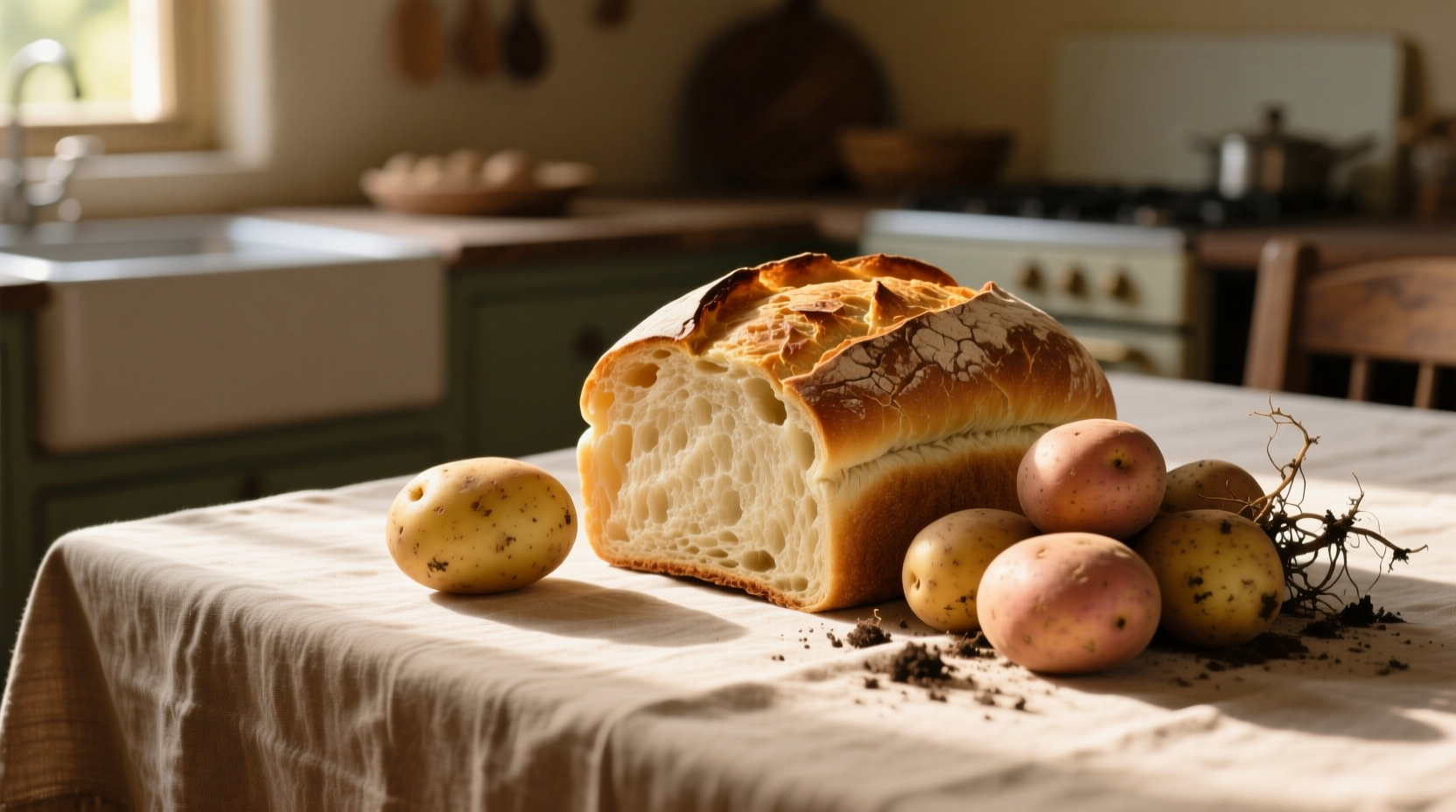When famine threatened European communities, resourceful bakers discovered that mashed potatoes could extend limited wheat supplies while improving bread's moisture retention and shelf life. This practical adaptation transformed both ingredients from separate staples into a powerful nutritional alliance that sustained generations.
Historical Evolution of Potato-Bread Integration
The marriage of potatoes and bread began in earnest after the potato's introduction to Europe in the 16th century. Initially met with suspicion, potatoes gradually gained acceptance as reliable famine preventers during wheat crop failures. By the 18th century, German and Irish bakers routinely incorporated boiled potatoes into their doughs when wheat became scarce.
Key Milestones in Potato-Bread History
- 1570s: Potatoes arrive in Spain from South America
- 1770s: Frederick the Great of Prussia mandates potato cultivation
- 1845-1852: Irish Potato Famine forces creative bread substitutions
- 1917-1918: WWI "war bread" in Germany contains up to 30% potato flour
- 1940s: Potato bread becomes staple in UK during wheat rationing
Nutritional Synergy Between Potatoes and Bread
While both provide carbohydrates, their nutritional profiles complement each other in ways that benefit human health. Potatoes contribute potassium and vitamin C that white bread lacks, while bread provides additional protein and B vitamins.
| Nutrient | White Bread (100g) | Potato (100g) | Combined Benefit |
|---|---|---|---|
| Calories | 265 kcal | 77 kcal | Balanced energy release |
| Protein | 9g | 2g | Complete amino acid profile |
| Vitamin C | 0mg | 19.7mg | Enhanced immune support |
| Potassium | 110mg | 421mg | Improved electrolyte balance |
According to USDA FoodData Central research, potato-enriched breads maintain higher moisture content for up to 48 hours longer than standard wheat breads, reducing food waste while providing sustained energy release through their complementary starch structures.
Practical Applications for Modern Cooks
Today's home bakers can leverage this historical pairing to create superior breads with enhanced texture and nutrition. The potato's natural sugars promote better browning, while its starches create a tender crumb that stays moist longer.
Perfect Potato-to-Flour Ratio
For optimal results, use this ratio in your next loaf:
- 1 part mashed potato (cooled)
- 3 parts wheat flour
- 1 part water (adjust as needed)
- Standard yeast and salt proportions
This combination works particularly well for sandwich breads and dinner rolls where moisture retention matters most. However, avoid exceeding 30% potato content if you prefer a more traditional bread texture.
Regional Specialties Worth Trying
Certain cultures have perfected potato-bread combinations over centuries:
- Irish Potato Bread: Uses mashed potatoes with baking soda instead of yeast
- German Kartoffelbrot: Incorporates rye flour with potato water for sourdough
- Polish Ziemniaczane Placki: Potato pancakes sometimes include bread crumbs

When Potato-Bread Combinations Shine (and When They Don't)
Understanding context boundaries helps maximize this pairing's benefits:
Ideal Applications
- Cold climate regions where both ingredients store well
- Periods of wheat scarcity or high prices
- Creating soft sandwich breads that resist staling
- Adding nutritional value to simple bread recipes
Limitations to Consider
- Not suitable for traditional French baguettes requiring crisp crust
- May require recipe adjustments for high-altitude baking
- Gluten-free versions need additional binders beyond potato
- Shorter shelf life in humid environments due to increased moisture
Research from the Journal of Cereal Science confirms that potato-amended breads maintain superior texture for 3-5 days compared to 1-2 days for standard white bread, making them particularly valuable for reducing household food waste.
Modern Interpretations for Contemporary Kitchens
Today's chefs are rediscovering potato bread's advantages beyond mere sustenance. Artisan bakeries now highlight potato-enriched sourdoughs that develop complex flavors through extended fermentation. The potato's natural enzymes interact with wheat proteins to create breads with remarkable depth of flavor and improved digestibility.
For home experimentation, try substituting potato water (the cooking liquid from boiled potatoes) for regular water in your favorite bread recipe. This simple swap adds subtle sweetness and nutrients while improving dough elasticity. Just remember to cool the potato water completely before mixing with yeast.
Frequently Asked Questions
Can I make potato bread without mashed potatoes?
Yes, you can substitute potato water for regular water in standard bread recipes. Simply boil potatoes, reserve the cooled cooking liquid, and use it in place of water. This provides potato starch benefits without altering texture significantly.
Does potato bread contain more calories than regular bread?
Potato bread typically has slightly fewer calories per serving than standard white bread because potatoes replace some flour while adding moisture. A 100g serving of potato bread contains approximately 240 calories versus 265 in white bread.
How does potato affect bread's shelf life?
Potatoes extend bread's freshness by 48-72 hours compared to standard loaves. The potato starches retain moisture better than flour alone, keeping bread soft and preventing staling. Store potato bread in a paper bag rather than plastic to maintain optimal crust texture.
Can potato bread be made gluten-free?
Traditional potato bread requires gluten for structure, but you can create gluten-free versions using potato starch with alternative flours like rice or sorghum. You'll need additional binders like xanthan gum to replicate the elasticity that gluten provides in conventional recipes.











 浙公网安备
33010002000092号
浙公网安备
33010002000092号 浙B2-20120091-4
浙B2-20120091-4